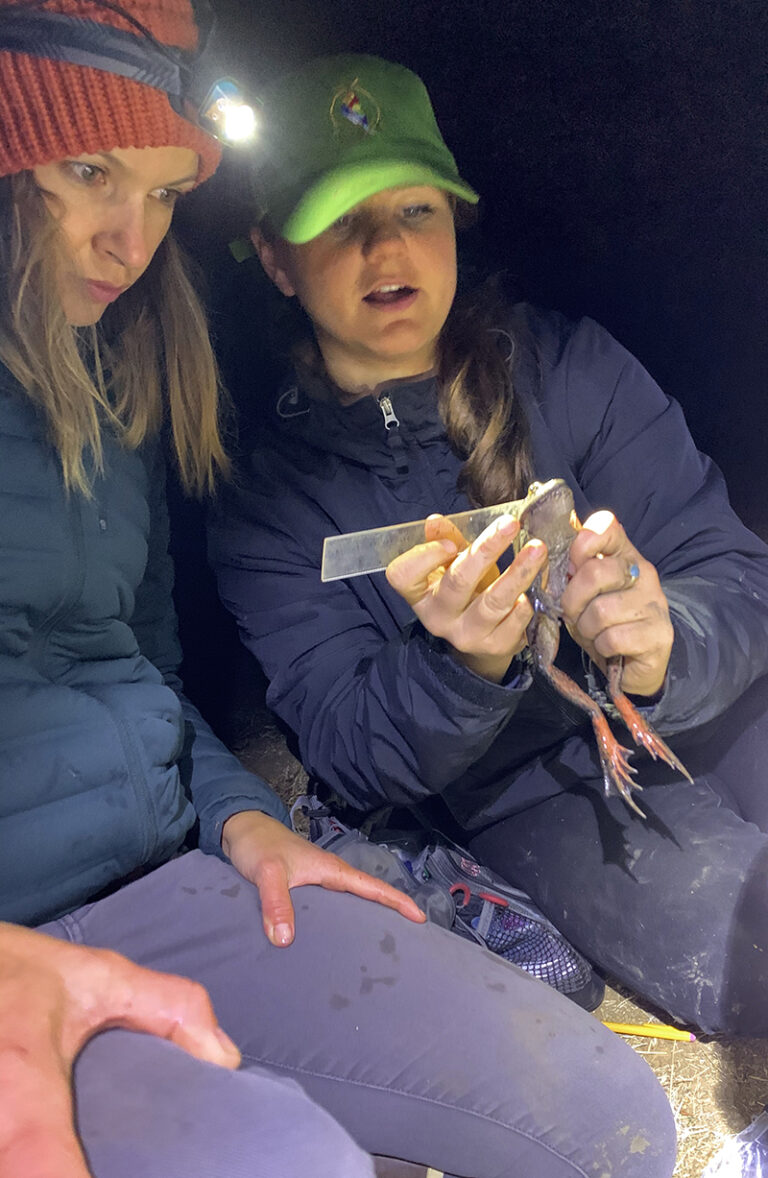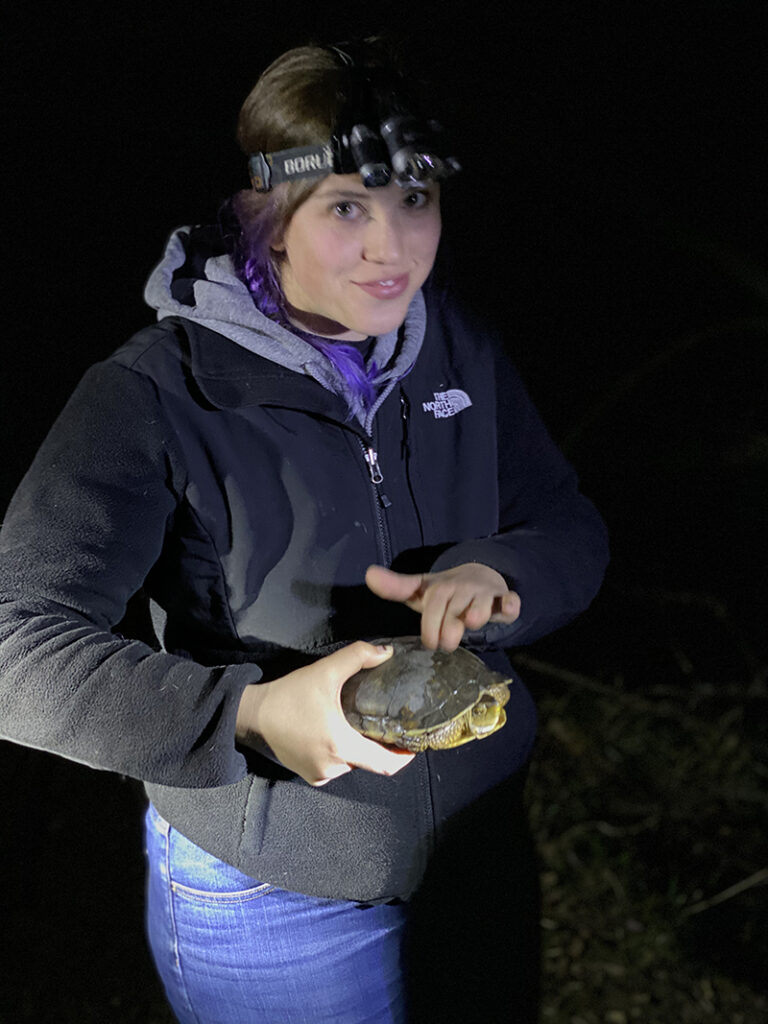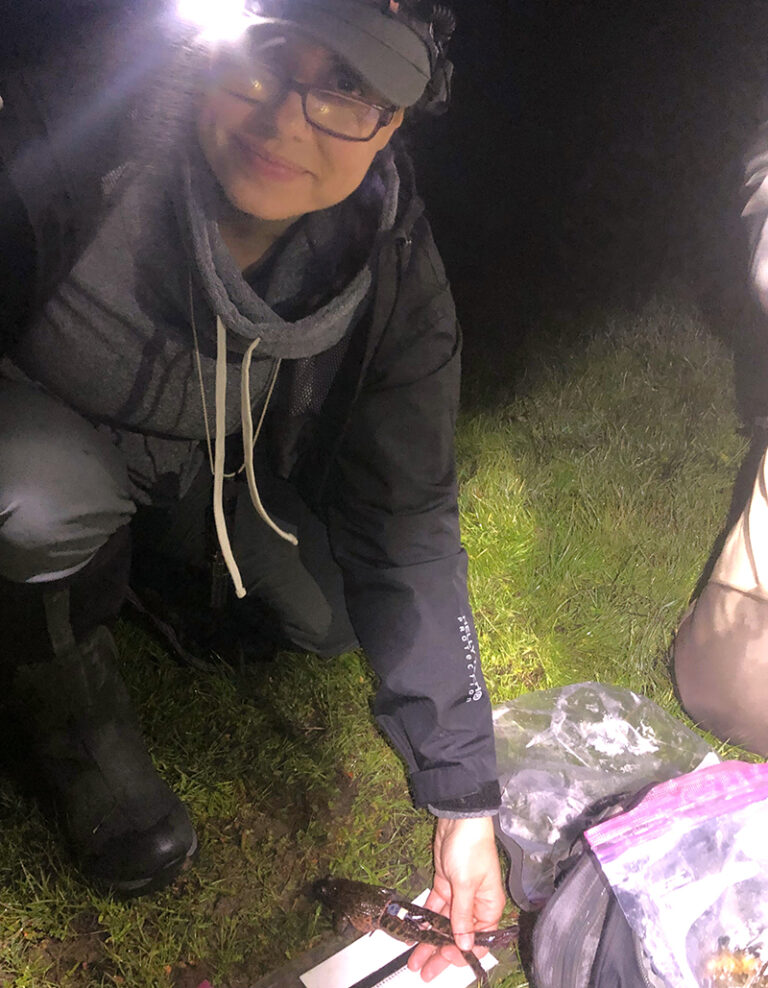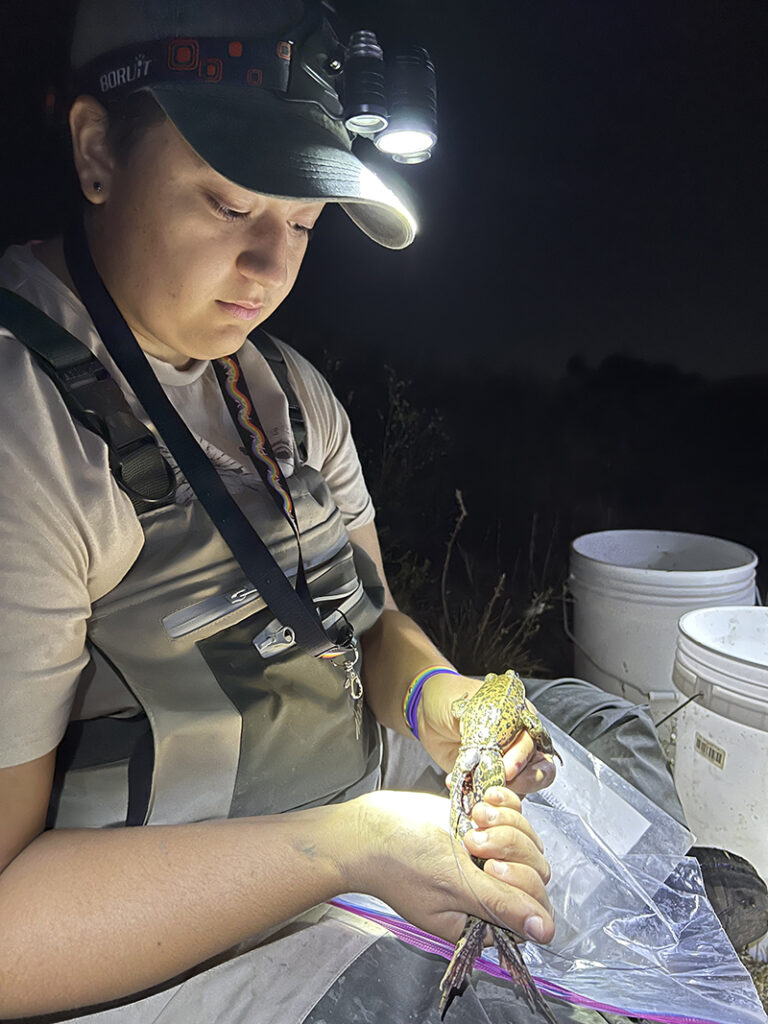The Mitsui Ranch is home to several native amphibians, among which are two that are listed as Species of Special Concern by the State of California: the foothill yellow-legged frog (Rana boylii), and the California giant salamander (Dicamptodon ensatus). Another, the California red-legged frog (Rana draytonii), is listed as “Threatened” by the United States government. All three species listed above are “biphasic” amphibians, meaning that their eggs are laid in water and hatch into aquatic larvae that “breathe” oxygen through gills. When larvae are mature, they transition, through a process know as metamorphosis, into air-breathing terrestrial adults. The adults of these species live the remainder of their very long lives (up to 20 years, in some cases) in upland areas of the landscape, only returning to water once a year to breed.
Due to their semipermeable skin, ectothermic metabolism, and their dependence on both terrestrial and aquatic habitats, amphibians are an excellent indicator for the overall health of the environment because they are sensitive to environmental changes. Thus, we monitor the populations of these amphibians concurrent with the implementation of restoration activities (rotational grazing and prescribed fire) aimed at increasing soil health and plant biodiversity. Our monitoring program began by simply recording the presence of the life history stages of each species: eggs, larvae, and frogs, but it has burgeoned into an active research program involving graduate students from the Girman Lab at Sonoma State University.
Our demography studies on the two native frogs inform decisions on what kinds of studies that Sonoma State (SSU) graduate students choose to work on here. To understand the frog population structure, we began nocturnal searches for frogs on the ranch. When encountered, we captured and weighed them, took length measurements, and determined life history stage (adult vs juvenile) and sex. We also placed passive integrated transponders (PIT) in each frog so that we could identify individuals when encountered again. By this means, we could estimate their growth and movements over time. Subsequently, we learned that frogs move seasonally, and sometimes over great distances. From this, Lisa Surber (SSU) embarked on a thesis project using radio-telemetry to determine landscape use and movements of California red-legged frogs (see Publications tab). Lisa completed her Masters thesis in 2019 and is earning a Ph.D. at the University of Illinois, Champagne-Urbana.
From the landscape use portion of Lisa Surber’s study, Anna Erway (SSU) designed a research program testing the hypothesis that frogs of different sizes use the creek landscape in different ways. She hypothesized that larger frogs could travel farther from water to bask and hunt than smaller frogs due to thermal inertia: larger frogs hold a cooler core temperature, therefore are not subject to dehydration as they venture from a water source like smaller frogs are Anna studied California red-legged frogs and foothill yellow-legged frogs. Anna’s thesis is available under the Publications tab.
Jennaca Hajek (SSU) made important modifications in her study design to allow for more accurate estimations of how California red-legged frogs use the landscape. She focused on the post-breeding migrations of California red-legged frogs that occurs in late winter. Her findings will be an important contribution to helping us maintain preferred migration routes of frogs, and to adjust our grazing programs accordingly. Jennaca is currently writing her thesis and we will post it as soon as it becomes available.
For 4 consecutive years, we attempted to conduct a radio-telemetry on newly transformed California red-legged frogs (froglets, or metamorphs) but weather issues, or equipment issues scuttled plans each time. This past fall, we finally launched a radio-telemetry study tracking froglets as they leave their natal ponds with the coming of fall rains. This project is being carried out by Hale Garcia-Dean (SSU) and will continue through winter 2024. Hale’s project has revealed some very interesting phenomena about how smaller, newly transitioned frogs use the landscape so stay tuned.
We are developing plans to begin researching landscape use by California giant salamanders in Copeland Creek. We hope that this project will be co-led by erstwhile SSU student Victoria Brunal. Victoria just completed a Masters degree on California tiger salamander (Ambystoma californiense) migrations in the Santa Rosa plain and she has been a frequent volunteer on Mitsui Ranch research projects. In addition, we are collaborating with Jeff Alvarez (The Wildlife Project) in an effort to understand the movements of our native freshwater turtle, the northwestern pond turtle (Actinemys marmorata). This project is still in the planning stages, but were are optimistic that it will begin soon.



